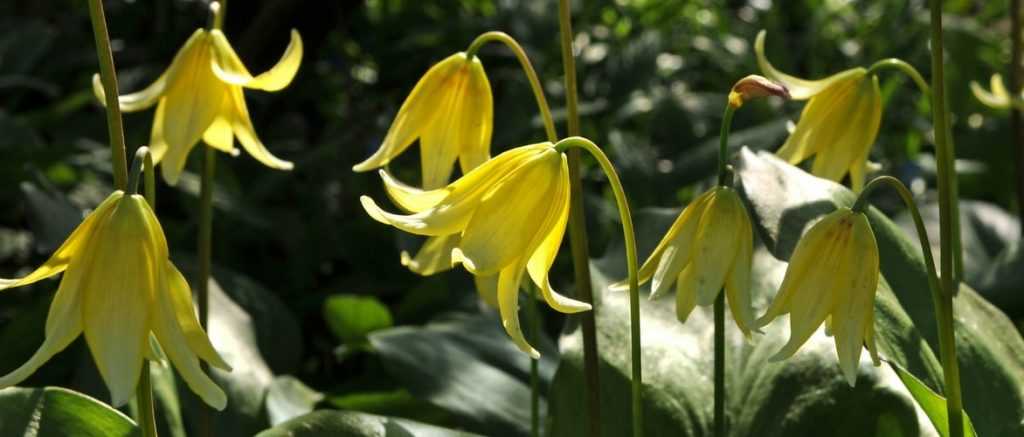
Erythronium: Planting and Growing
Contents
Erythroniums in a nutshell
- Erythroniums offer elegant blooms from early spring!
- Their delicate pink, white or yellow flowers, resembling small lilies, are particularly charming.
- They dislike drought conditions. Plant them in rich, moist soil in shaded areas!
- They’re perfect for woodland gardens.
- Once established, Erythroniums require very little maintenance.
Our Expert's Word
The Erythronium is a lovely bulbous perennial that heralds the return of spring! It captivates us with its elegant blooms, which sometimes appear as early as late winter, resembling small lily flowers. Also known as dog’s tooth due to the shape of its bulb, the Erythronium dens-canis is a plant found growing wild in France… Discover the varieties ‘Pagoda’ with yellow flowers and ‘White Beauty’ with white flowers! It’s a stunning bulb, unfortunately too rare in cultivation. Once flowering is over, the Erythronium goes dormant and fades away, making room for other plants… And every year, in spring, the same spectacle unfolds! It displays its small, luminous flowers, nodding towards the ground, instantly bringing brightness to flower beds. They possess that rare elegance, a simple and graceful charm, humble and unpretentious… And are perfect for accompanying other delicate spring bulbs: Crocuses, Ipheions, or Muscari.
Erythroniums are woodland plants that thrive in cool, humus-rich, and shaded soils. Their main enemy: drought! They also dislike winter wetness. They are fairly easy to grow and are rarely targeted by diseases or pests, apart from the occasional slug that may nibble on the foliage. Maintenance is minimal: simply mulch to retain soil moisture and water during dry spells. When conditions suit them, Erythroniums can even naturalise… A plant to adopt without delay!
Botany
Botanical data
- Latin name Erythronium sp.
- Family Liliaceae
- Common name Trout Lily, Dog's Tooth Violet, Red Satyrion
- Flowering spring (March to June)
- Height 20 to 40 centimetres
- Exposure partial shade
- Soil type moist and well-drained
- Hardiness excellent (down to -30°C)
The Erythroniums are bulbous perennial plants comprising around thirty species. They are primarily found in North America, but there are also some Asian and European species. Erythronium dens-canis grows wild in the southern half of France, particularly in mountainous regions: in the southern Alps, as well as in the Massif Central and the Pyrenees. It is found in deciduous forests and woodland edges, as well as in limestone grasslands and heaths. It is protected in certain departments.
The genus name Erythronium comes from the ancient Greek ‘erythros’, meaning red. Dens-canis refers to the appearance of the bulb, which resembles a dog’s canine tooth.
Erythronium belongs to the large Liliaceae family, which includes over 400 species of often bulbous herbaceous plants. They typically overwinter underground thanks to a storage organ, either a bulb or sometimes a rhizome. This family includes many cultivated plants such as Lilies, of course, but also tulips, daffodils, and grape hyacinths. The flowers of Erythroniums somewhat resemble those of Lilies.
Erythroniums form a clump of leaves at ground level, from which a long flowering stem emerges. They typically grow to around 20 centimetres in height but can reach up to 40–50 centimetres tall. Erythronium dens-canis is one of the smallest, reaching only about 15 centimetres in height.
Erythroniums flower from early spring, starting in March and continuing until June depending on the species. They take time to establish and may need a few years before flowering.
In spring, the Erythronium produces multiple flowering stems that rise above the clump of leaves. The flowers are attached to the ends of these long reddish peduncles and nod towards the ground. The Erythronium dens-canis has pink flowers, but there are varieties with yellow (Erythronium ‘Pagoda’) or white (Erythronium ‘White Beauty’) blooms. They remind us of small lily flowers (unsurprisingly, as they belong to the same family!). They are appreciated for their simple yet elegant appearance! They can measure up to 7 centimetres in diameter for varieties like ‘White Beauty’. Those of Erythronium dens-canis are smaller (about 4 cm). They consist of three petals and three elongated sepals, which look similar (referred to as tepals). They are beautifully reflexed backwards, revealing six stamens at the flower’s centre, with anthers (pollen-bearing tips) in striking purple, white, or yellow hues.
Erythronium has large leaves, elongated and broad, measuring up to 30–40 centimetres in length. They are deep green and glossy, often with beautiful brown, bronze, or purple marbling, more pronounced early in the season when the leaves are young. They develop lovely colour variations! It’s an original foliage, especially that of Erythronium dens-canis, which has very pronounced marbling. The leaves are basal and emerge in a clump at ground level. They disappear after flowering.
The bulb of the Erythronium is white, elongated, and ends in a curved point. It resembles a dog’s canine tooth, hence its species name: dens-canis. It produces offsets, small bulbs that develop around the main bulb, allowing the plant to be propagated by division.
After flowering, the Erythronium produces swollen three-chambered capsules as fruits. They contain seeds equipped with elaiosomes, small appendages that attract ants: these insects will disperse and bury the seeds!
Once flowering is over, the Erythronium’s foliage dries up, and the plant disappears in summer, only to reappear in spring. It makes way for other plants. However, even during dormancy, the substrate must not dry out, as the bulb is fragile and needs to stay cool.
The main varieties of Erythronium
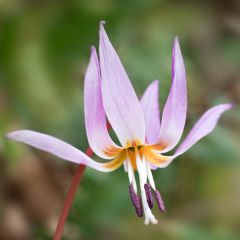
Erythronium dens-canis
- Blütezeit April, May
- Höhe bei Reife 12 cm
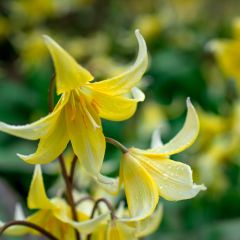
Erythronium tuolumnense Pagoda
- Blütezeit April, May
- Höhe bei Reife 20 cm
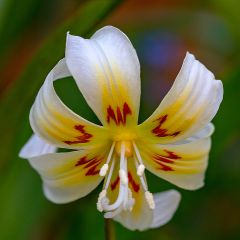
Erythronium White Beauty
- Blütezeit April, May
- Höhe bei Reife 20 cm
Planting
Where to Plant Erythronium?
We recommend choosing their location carefully because, once established, erythroniums dislike being moved. The ideal is to recreate growing conditions similar to those found in a deciduous forest, offering them a situation comparable to their natural habitat.
The best exposure for erythroniums is partial shade, though they can also tolerate sun as long as the soil remains moist. As they naturally grow in woodland settings, they will appreciate being planted under light shade, particularly beneath deciduous trees. The plant can begin its growth cycle and benefit from early spring sunlight before the tree fully leafs out, while the tree will provide protection from intense summer sun.
Erythronium prefers cool, light, humus-rich soil (like forest soil). It cannot tolerate drought, even when dormant—the bulb must never dry out! However, it dislikes excessive winter moisture, which may cause the bulb to rot. If your soil tends to retain water, add a layer of gravel when planting. Feel free to enrich the soil with compost to boost organic matter. Although erythronium is not overly sensitive to soil pH, it seems to prefer slightly acidic conditions.
When to Plant?
Plant erythroniums in autumn, ideally in September or October. Later planting is possible but not recommended, as bulbs tend to establish less successfully. Do not store the bulbs—plant them immediately after purchase, this is crucial! Storage is tricky because they must neither dry out nor rot.
How to Plant Erythronium?
Bury the bulb 10 to 15 centimetres deep. If your soil is heavy or clay-based, add gravel to prevent waterlogging and bulb rot. We recommend enriching the soil with compost. Plant them in groups of at least five to seven bulbs, spacing them about 10 centimetres apart.
- Loosen the soil with a spade. Erythronium thrives in organically rich soil—we suggest adding compost or leaf mould.
- Dig a planting hole. You can add gravel for drainage, especially if your soil is heavy.
- Plant the bulb about 10 centimetres deep, placing the rounded, root-forming side downward.
- Cover with soil and firm gently.
We recommend placing a small stake near the bulb to mark its location and avoid accidental damage—for example, when working the bed before spring growth begins.
Erythroniums can also be grown in pots. Add a layer of gravel or pumice at the base for drainage. Fill with compost, plant, cover with substrate, and water. Potted plants require closer watering attention, as the substrate dries faster than in-ground plantings.
→ Learn more in our guide: Growing Erythronium in Pots.
Maintenance
Erythronium is a plant that requires very little maintenance! Water during dry spells in summer, as the bulb needs to stay cool. We recommend mulching with a layer of dead leaves or wood chips (ramial chipped wood) to maintain moisture, especially during summer. Conversely, soil that remains wet in winter may cause the bulb to rot, which is why we advise improving drainage.
You can remove the flowers once they have faded to prevent seed formation, which would unnecessarily weaken the plant. However, wait until the leaves have dried before cutting them back and tidying the clump.
It is very rare for erythronium to be affected by diseases, but watch out for slugs! You can protect your plants by using slug pellets or spreading wood chips around them as a barrier. The main cultivation problems arise from poorly drained soil, which causes the bulb to rot, or from summer drought.
Propagation
To propagate Erythroniums, you’ll need patience! You can sow seeds or divide the bulbs, but these are delicate techniques that take time. It will take several years before young Erythroniums bloom. We recommend propagating by bulb division rather than by seed.
Bulb Division
When clumps become dense, after three or four years, you can divide them. Do this once flowering has finished, in early summer, once the foliage has dried and the plant has gone dormant.
- Choose a well-established and fairly dense clump. Dig it up and remove any excess soil around the bulb.
- Gently separate the offsets from the main bulb.
- Replant them immediately (as the bulbs must not dry out!), about 10 cm deep, in previously prepared soil.
Sowing
If you wish to try sowing Erythronium seeds, do so in late summer. Reserve this method for botanical species, such as Erythronium dens-canis, rather than horticultural varieties. Sowing is tricky: depending on the species, the conditions required for germination vary. Some need a period of warmth followed by cold (especially for species that grow naturally at high altitudes). Moreover, from seed, some (like Erythronium revolutum) take 7 to 10 years before producing their first flowers!
Start by preparing a pot filled with compost. Sow the seeds sparingly to avoid needing to transplant them in the first year, then cover them with a few millimetres of substrate. Water. Place the pot outdoors in a cool spot, as germination is encouraged by winter cold. You’ll need to wait at least three years before they flower!
Association
Erythronium integrates perfectly into mixed borders in partial shade, alongside perennials or other bulbous plants. Its delicate, elegant flowers will add a light and original touch to your flower bed. It’s an ideal plant to pair with other spring bulbs: fritillaries (particularly Fritillaria meleagris), tulips, crocuses… You can plant them in clusters in a lawn or a wilder area, giving your garden a meadow-like feel. Don’t hesitate to plant Erythronium ‘Pagoda’ alongside muscari and tulips: it will bring brightness and contrast with the slightly darker hues of muscari, while the tulips will add vibrant splashes of colour!

Erythronium ‘Pagoda’ with muscari and tulips: a stunning mix of yellow, blue/purple and red (photo Steven Bemelman – iBulb)
Erythroniums thrive in dappled shade and are perfect for woodland gardens! Create a wild, natural garden that requires little maintenance. Pair them with other shade-loving plants that enjoy cool conditions: take advantage of the decorative foliage of ferns, Brunnera macrophylla and hostas! Add colour with the delicate blooms of epimediums and bleeding hearts, and a touch of originality with Arisaemas. Cover the ground with a carpet of wood anemones (Anemone nemorosa), bluebells or trilliums. You’ll create a cool, lightly shaded garden where erythroniums will thrive and may even naturalise!
Erythroniums also adapt well to container growing, provided you monitor watering: the soil should stay moist in summer. Pair them with small spring bulbs: muscari, ipheions or Grecian windflowers (Anemone blanda), or with pansies.
Finally, erythroniums can grow in a cool, shaded rockery. Plant them alongside clumps of ferns (such as hart’s tongue ferns) and ornamental grasses (like Luzula sylvatica), arisaemas, violets and snowdrops. You can also enjoy the delicate blue blooms of Siberian squill (Scilla siberica)!
→ Discover 5 more beautiful plant combinations with Erythronium in our guide!
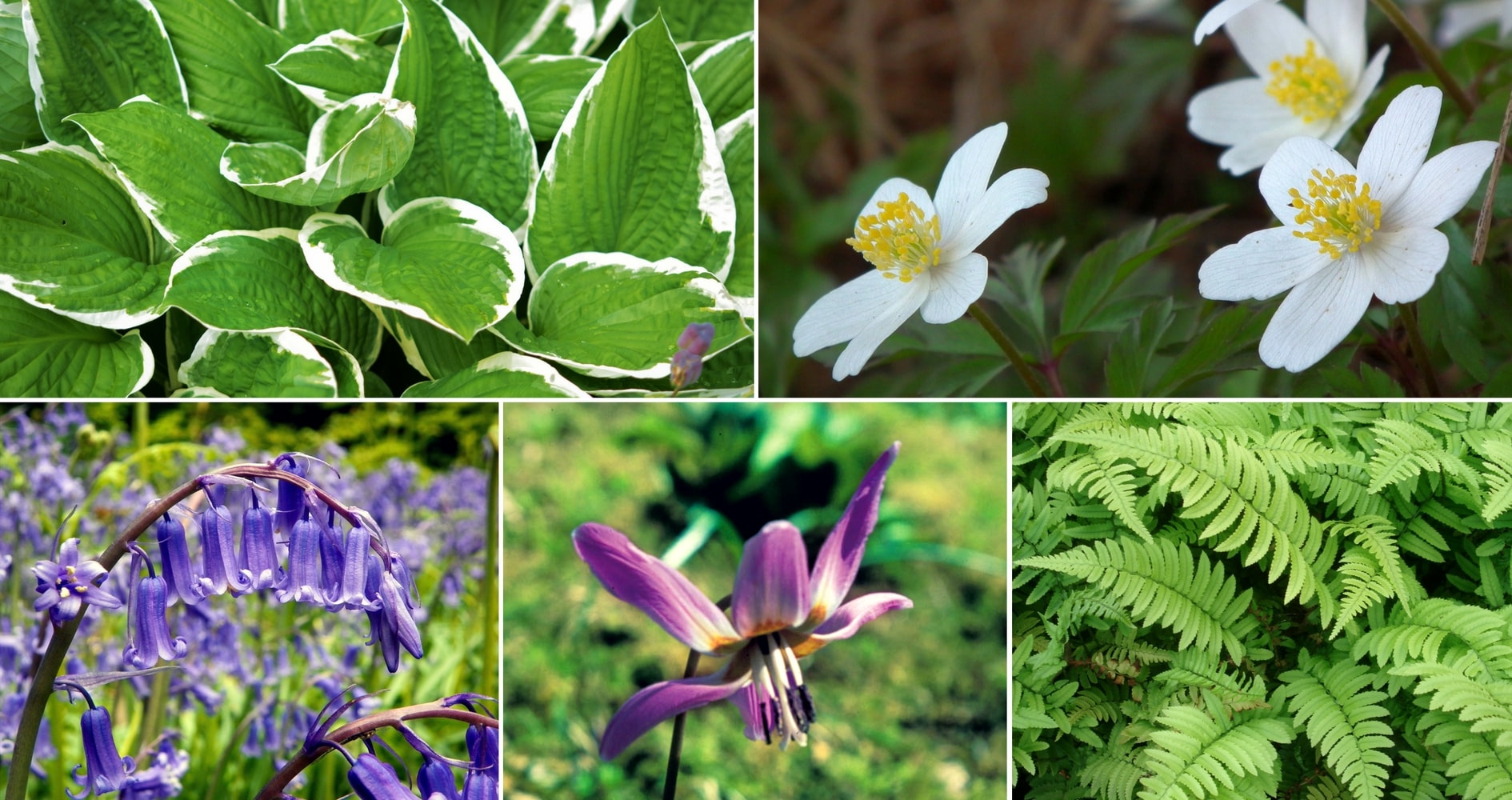
A woodland-inspired combination: Hosta, Anemone nemorosa, Bluebell (Hyacinthoides non-scripta), Erythronium dens-canis and Dryopteris cycadina.
Did you know?
- An edible plant!
In the past, the bulbs were consumed in Japan, ground into a powder used as a binding agent called katakuriko, which was used to prepare tempura. The leaves can also be eaten as a vegetable after cooking.
- A protected plant
Naturally occurring in France, Erythronium dens-canis is a rather rare plant in the wild, which is why it is protected in Aquitaine and Franche-Comté. If you come across it, avoid digging it up!
- A collaboration with ants!
Erythronium seeds bear elaiosomes: small outgrowths that attract ants. The ants will collect the seeds and carry them back to their nest, where the elaiosomes will help feed the larvae. In return, the seed finds itself in a favourable growing medium. The plant uses ants to disperse and sow the seeds in an especially rich substrate!
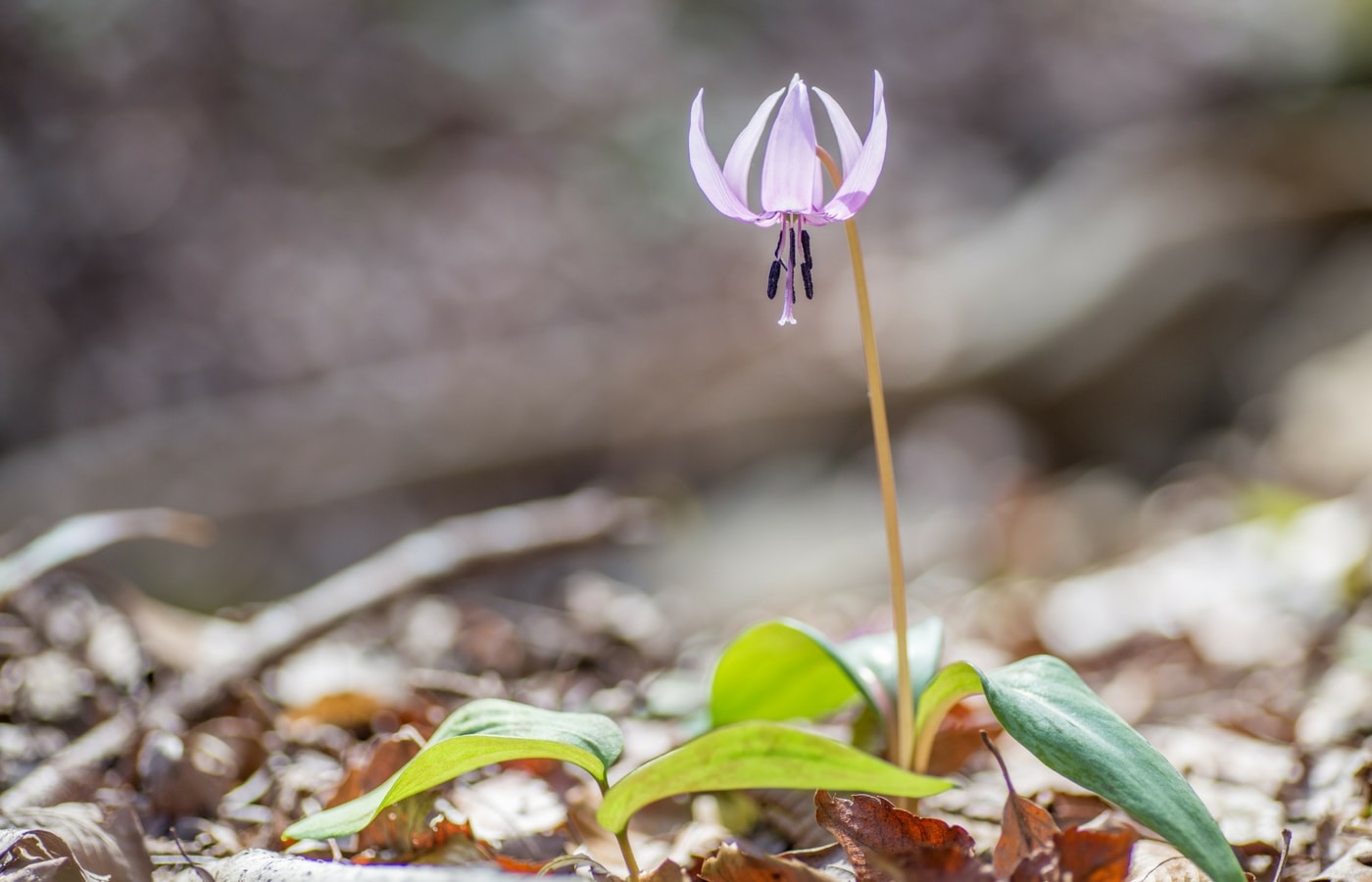
Useful resources
- Discover our range of erythroniums!
- Francis Peeters tells us about Erythronium ‘White Beauty’! (video)
Frequently asked questions
-
Should I lift the bulbs to store them over winter?
No, the Erythronium is a very hardy plant, which is why it can easily remain in the ground over winter. If you do dig up the bulbs, you should store them in a bag or pot filled with slightly moist compost to keep them cool without letting them rot... These bulbs cannot tolerate drying out! The simplest solution is therefore to leave them in the ground.
-
The flowering is over, can I cut back the foliage?
No, it's important to let the leaves dry out. The plant is replenishing its reserves: it needs these to produce a beautiful flowering display the following year. The foliage will naturally wither in summer and the plant will go dormant, only to reappear in spring... Wait until the foliage has completely dried before tidying the clump.
-
My Erythronium isn't growing. What should I do?
If you planted it in autumn and it hasn't sprouted in spring, the bulb may have rotted if your soil retains moisture. You should improve drainage when planting, even if it means planting the Erythronium on a slight mound to facilitate water runoff. Before planting, also ensure the bulb hasn't dried out... It cannot tolerate drought! If your erythronium comes from seed, you'll need to be patient. Germination is tricky and takes time.
-
Do my erythronium bulbs have mould? Can I still plant them?
Erythronium bulbs do not tolerate being out of the ground for extended periods: in dry conditions, they quickly dry out. In damp environments, they develop a layer of mould within days, which eventually penetrates deep into the bulb and causes rot.
If your bulbs show signs of mould, wipe them with a cloth and plant them promptly. If the mould has reached the inside of the bulb (indicated by a soft bulb), it is too late, and the bulb should be discarded.
We package our bulbs in small plastic bags with peat to minimise this issue. However, it may occasionally happen that some bulbs develop mould and escape our quality control before dispatch. If this occurs, please notify us for a replacement or refund.
- Subscribe!
- Contents
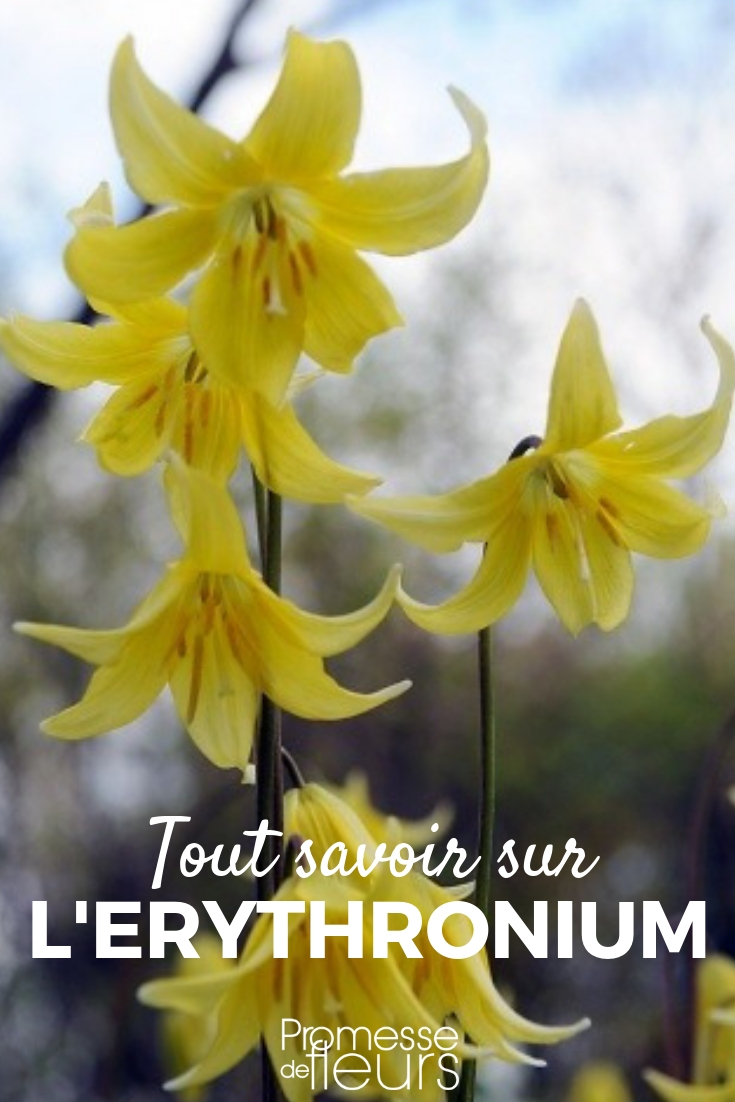


































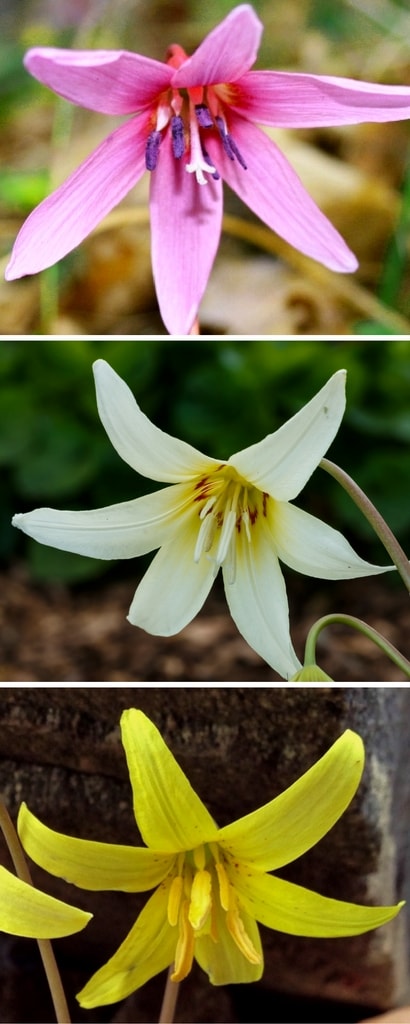
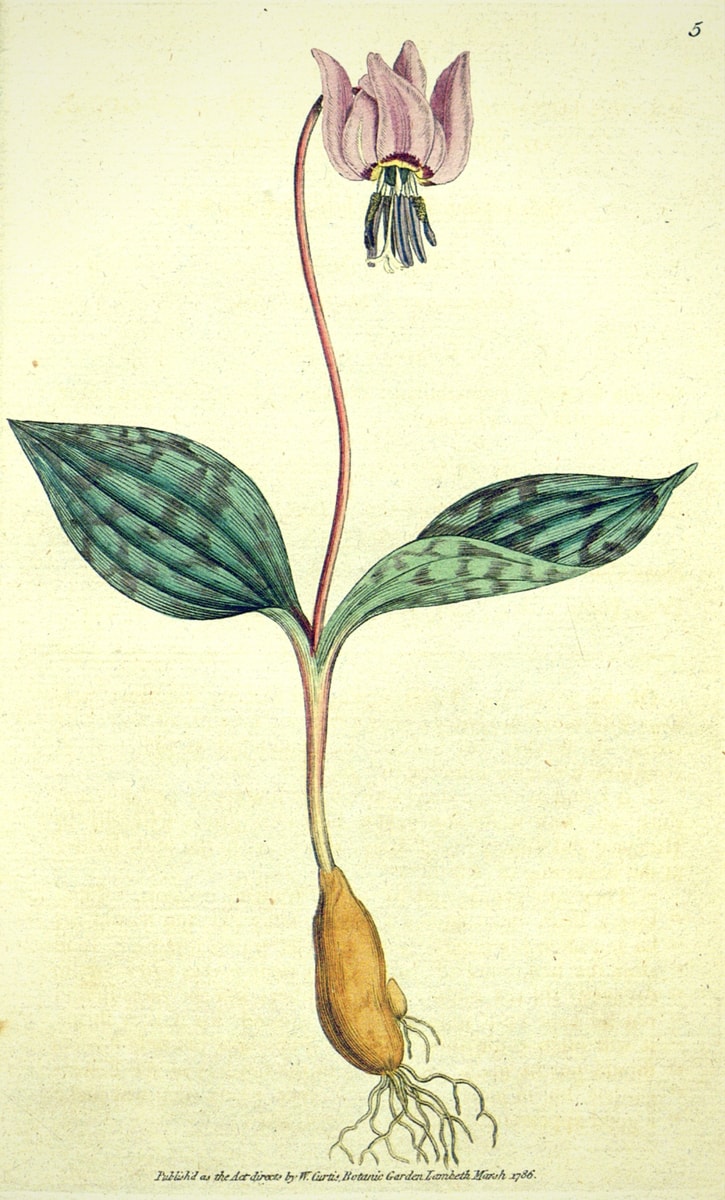
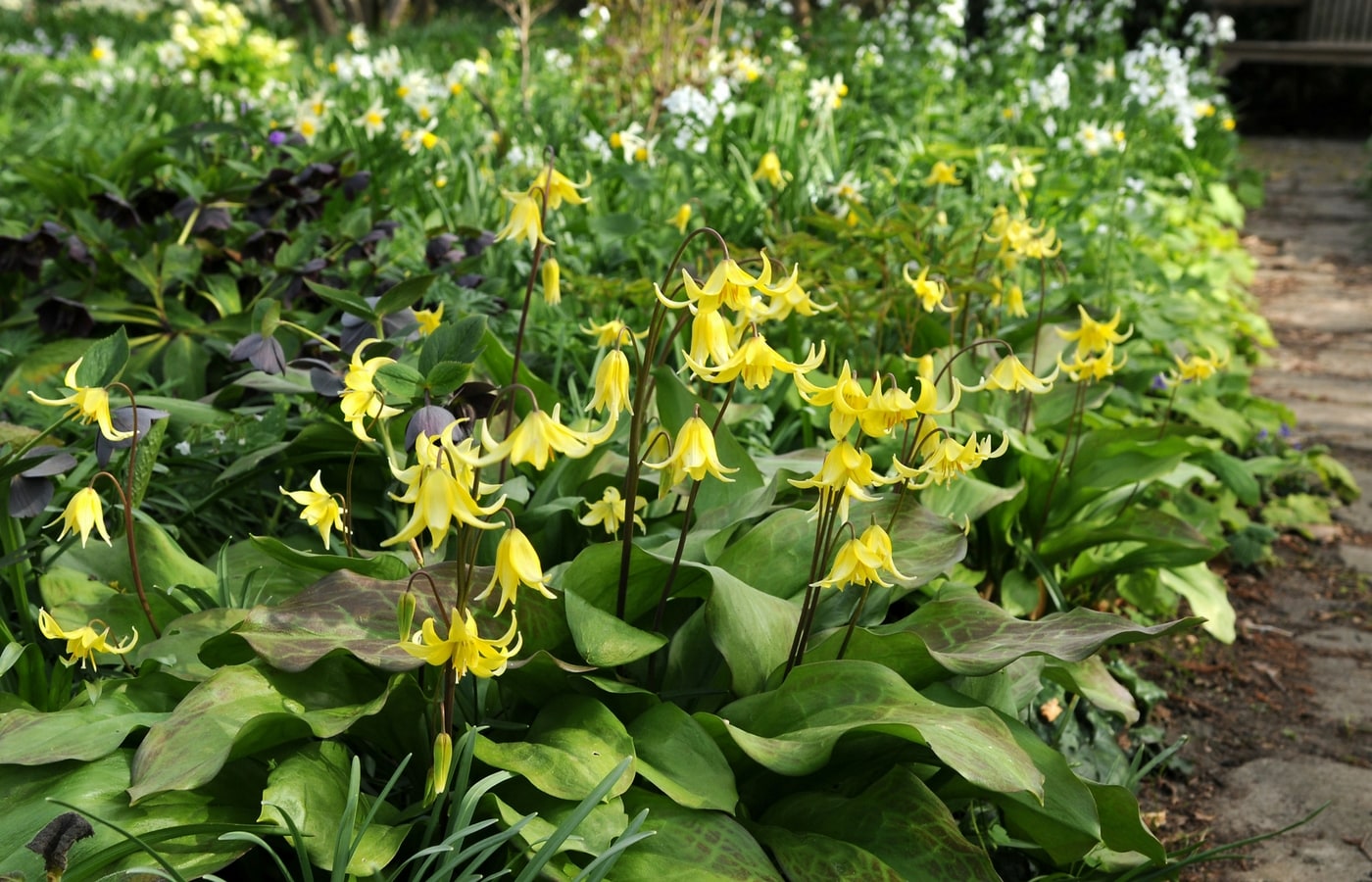
Comments